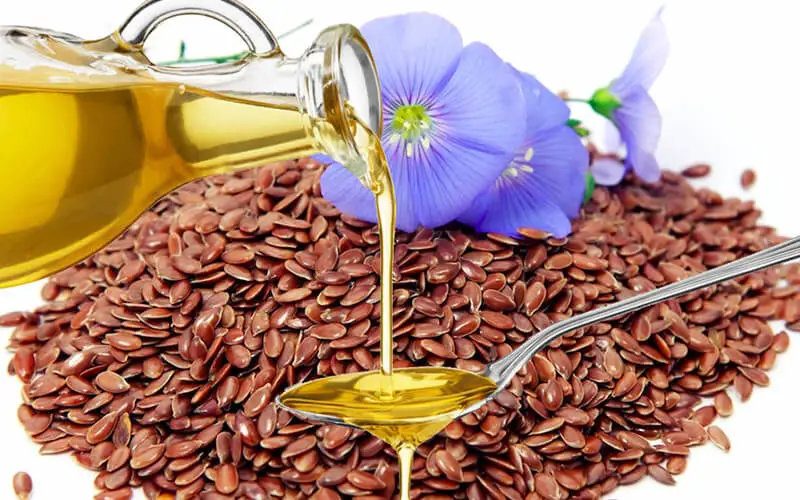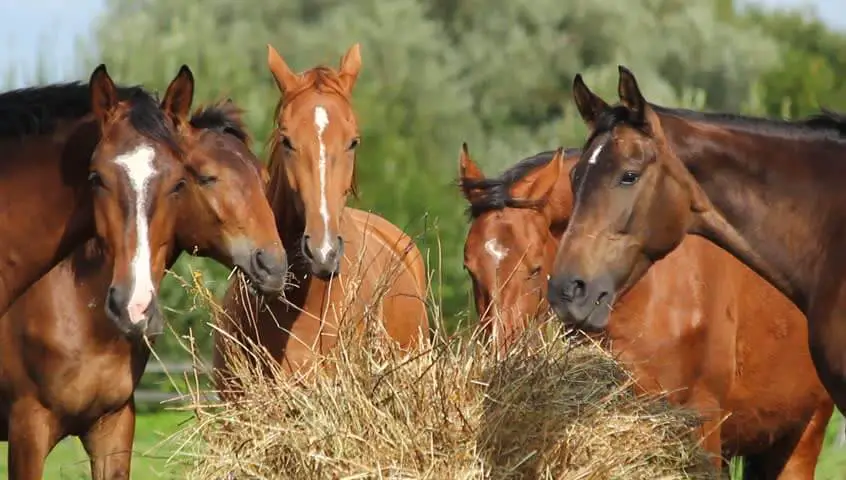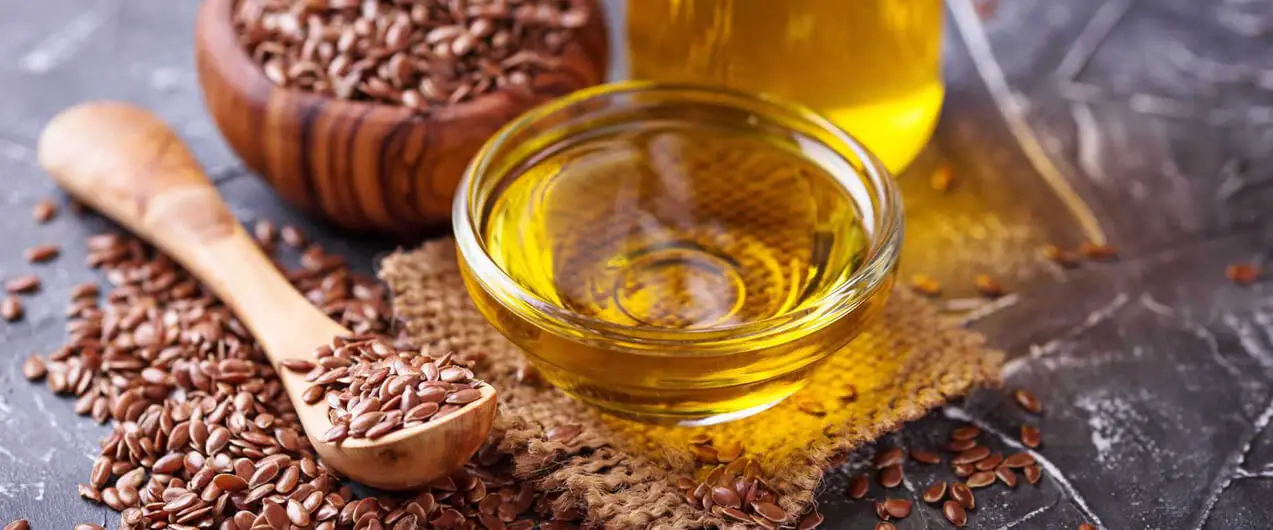Omega-3 fatty acids are an important part of horse feeding. Whether for muscle building, for skin and coat care, or simply for the immune system in general: the nutrient has a positive effect on the entire body. But where do our four-legged friends get it from best? If you’ve been asking yourself this question, you’ve probably come across linseed oil for horses. Here you can find out what this can really do, whether feeding makes sense, and if so, in what doses!
Linseed Oil Under the Microscope

Let’s start with the basics: what is linseed oil anyway? Basically, it is vegetable oil with a golden yellow color, which is obtained from linseed. The ripe oil flax seeds are cold-pressed to produce the liquid food. A large proportion of omega-3 fatty acids is retained – even more than in some fish species. So it’s no wonder that linseed oil is not only enjoying increasing popularity among us humans but is also playing an important role in animal feeding.
The Role of Omega-3 Fatty Acids in the Horse’s Body
For several years, research has confirmed that omega-3 fatty acids are essential for horses. The unsaturated fats cannot be produced by the body and must therefore be ingested through food. With horses – and many other herbivores – this is often easier said than done.
Because these animals have the greatest access to Omega 3 through the fresh pasture grass. The proportion of fatty acids in this is usually between three and five percent. In some grains and seeds, however, the proportion is sometimes significantly higher. In linseed oil, for example, it is even 55 grams per 100 ml.
But what exactly do the omega-3 fatty acids do in the horse’s body? For example, you are involved in ensuring the quality of your skin and hair. But they also support the immune system, can alleviate joint pain, and have anti-inflammatory effects. You can find oils here.
Why Linseed Oil for Horses?

We have just indicated that linseed oil contains a particularly high proportion of omega-3 fatty acids. For this reason alone, it is an integral part of many feeding plans, because the positive properties of the nutrient cannot be denied. But other oils for horses also have these positive properties – so why should you use linseed oil specifically?
Linseed oil for horses is one of the cold-pressed oils. In contrast to hot pressing, many healthy accompanying substances are retained in this process. These include, for example, phosphatides, mucilage, lecithin, and fat-soluble vitamins. In this way, the animals can obtain various additives from the linseed oil and at the same time digest it easily.
Another benefit of linseed oil is that it provides a large amount of energy without flooding the protein and carbohydrate balance. Feeding is often very useful during training phases or during muscle building. It is also popular with diets.
Much Does Not Mean Much: Be Careful When Feeding
Now that the positive properties of linseed oil are known, would you like to start feeding right away? We ask you to be patient. There are a few things you should pay attention to when giving linseed oil to horses. The body of our four-legged friends is not used to a high-fat diet, as the food is usually rich in fibers and low in oil.
Correspondingly, for evolutionary reasons, horses do not have a gallbladder. Instead, the liver produces enough bile acid to emulsify the oils ingested. This allows the enzymes of the saturated and unsaturated fatty acids to be processed by the body and delivered to the organ where they are needed.
However, the lack of a gallbladder also means that linseed oil should not be given indefinitely to horses. The fatty acids could then simply not be digested enough. As a rule, it is said that about 20 ml per 100 kg of body weight can be used as a daily ration without any problems. This value can also be increased over time when the liver has got used to the new supply.
Flaxseed vs. Linseed Oil: Horses and the Superfood
Are you still wondering whether you can also feed flaxseed pure? The answer is yes! Because it is not only for us humans that pure seeds are considered a true superfood. While the proportion of omega-3 fatty acids is not quite as large as in concentrated oil, the seeds themselves have other useful ingredients. These include:
- protein;
- vitamins B1, B2, B6, and E;
- selenium;
- valuable acids: folic, nicotinic, and pantothenic acid;
- natural mucilage.
Because of this varied list, flaxseed can provide even more body support than linseed oil does in horses. For example, they have a particularly positive effect on the stomach, because there the mucous substances are involved in the formation or regeneration of the gastric mucosa. For example, if you notice stool water, you can administer the seeds.
But be careful! The pure flax seeds contain cyanogenic glucosides. These amino acids are split into hydrocyanic acid, among other things, in the horse’s body, which is poisonous in large quantities. However, since this substance is contained in many plants, the body has got used to smaller amounts, which is why it is usually said that 100 to 120 g of seed per day is harmless for an adult horse. In addition, the hydrogen cyanide is rendered harmless by boiling it – so simply heat the flaxseed in hot water for 15 minutes, let it cool down and then feed it.
Other Alternatives to Linseed Oil for Horses
In addition to pure linseed and linseed oil, you can also give other alternative feed materials from the seeds. Linseed cakes and pellets are widely used. These are basically the solid remains of the oil pressing. These usually contain between 10 and 15 percent oil and otherwise bring the positive properties of the seeds with them.
This means that the proportion of amino acids is also high here – so check beforehand that this does not exceed the total requirement of your horse. If this is not the case, the flaxseed pellets are ideal as small treats in between meals and, by the way, can also be easily made yourself.
Correct Dose of Linseed Oil for Horse Feeding

Feeding linseed in liquid and solid form is not entirely safe for horses. We, therefore, advise you to strictly adhere to the manufacturer’s instructions, which are usually noted on the packaging. The following recommendations are more of a guideline – if you are not sure whether linseed oil is the right choice for your animal at all, it is best to speak to your attending vet.
Once you have decided to give the oil, your animal will usually benefit from 50 ml a day. This dose is best mixed with the concentrate or juice feed. This makes it particularly easy to pick up. If your horse is suffering from acute joint pain or if it is time to change coat, you can give more. The guideline value should always be 20 ml per 100 kg of body weight.
Flaxseed in the form of pellets or granules should be fed in a similar amount. This is about 20 to 30 grams per 100 kg horse weight. You can simply add them to the mash or serve them as treats. Incidentally, the same amount applies to pure, crushed flaxseed. However, the following applies to all forms: It is best to use it as a kind of cure whenever the horse needs additional support.

